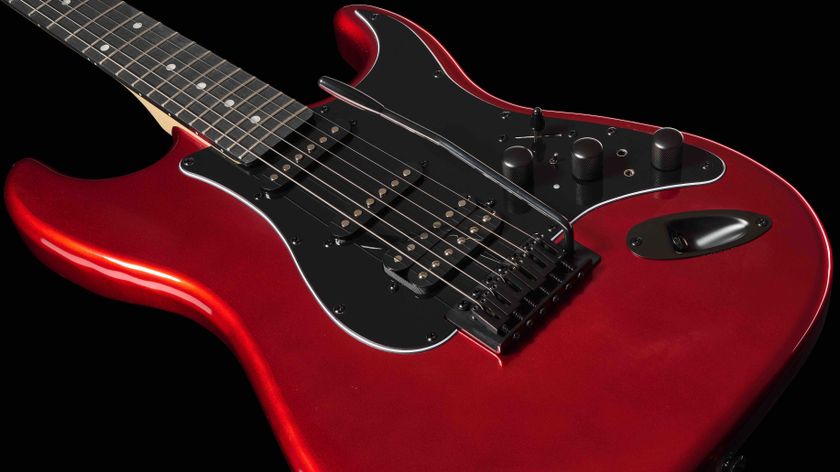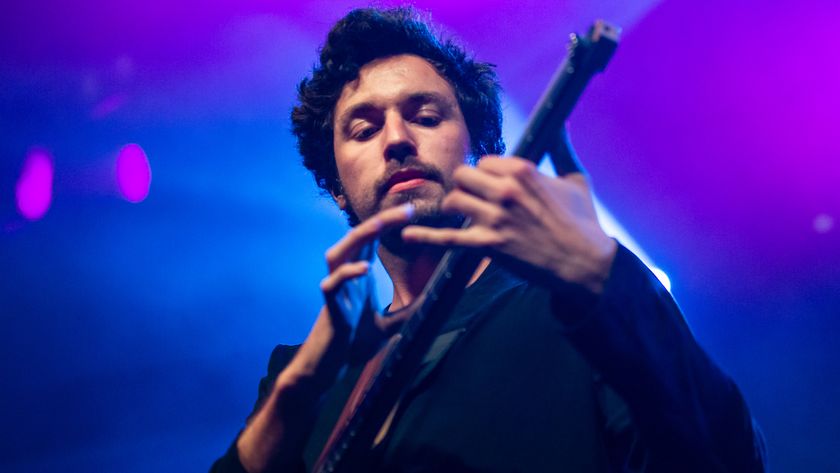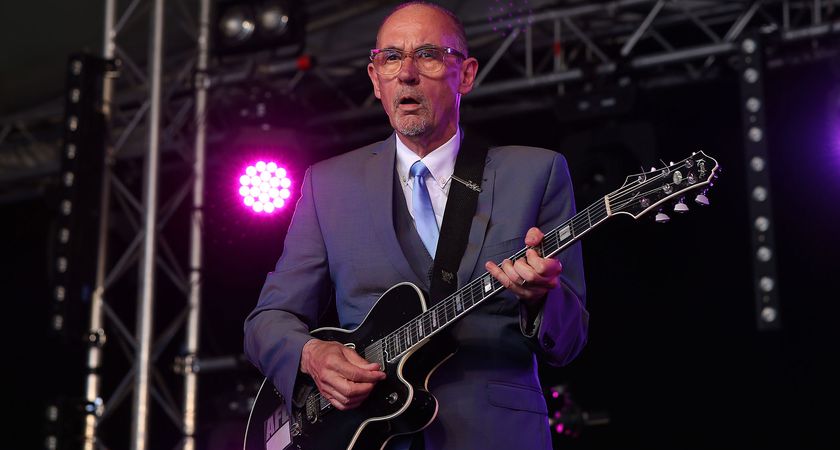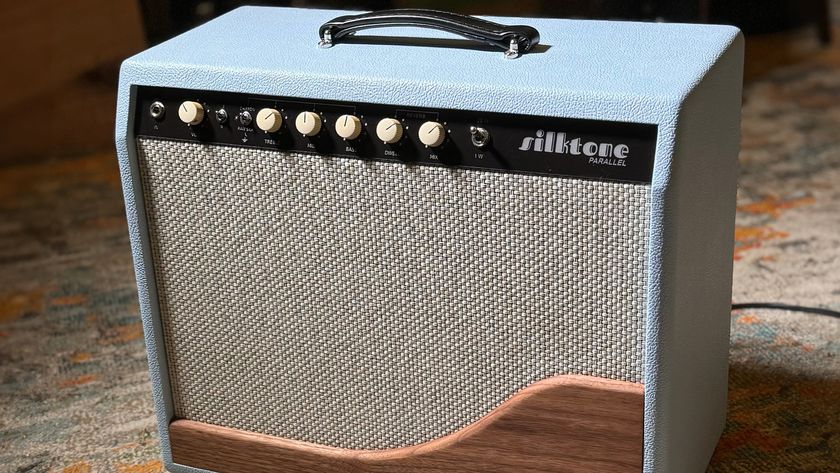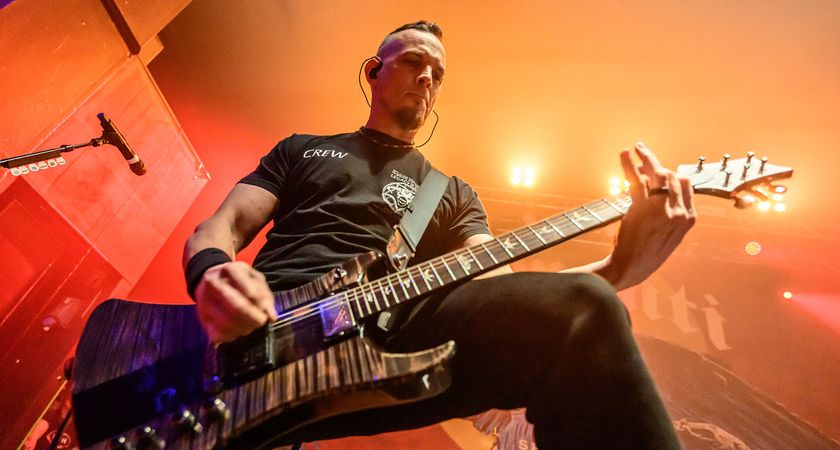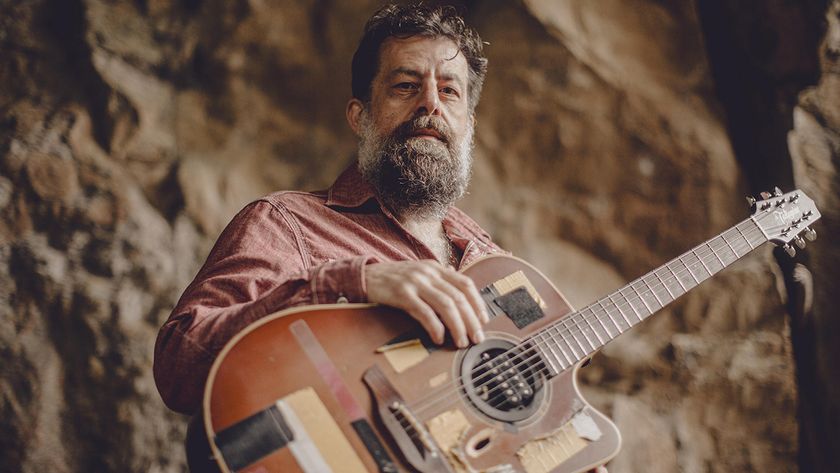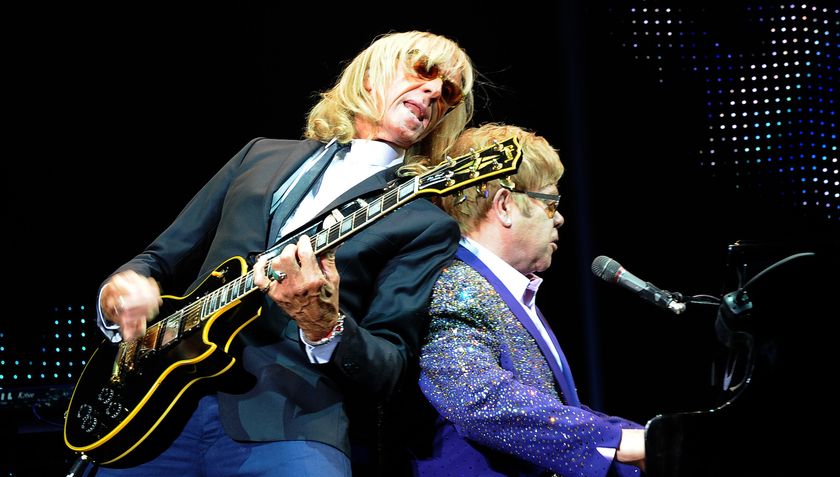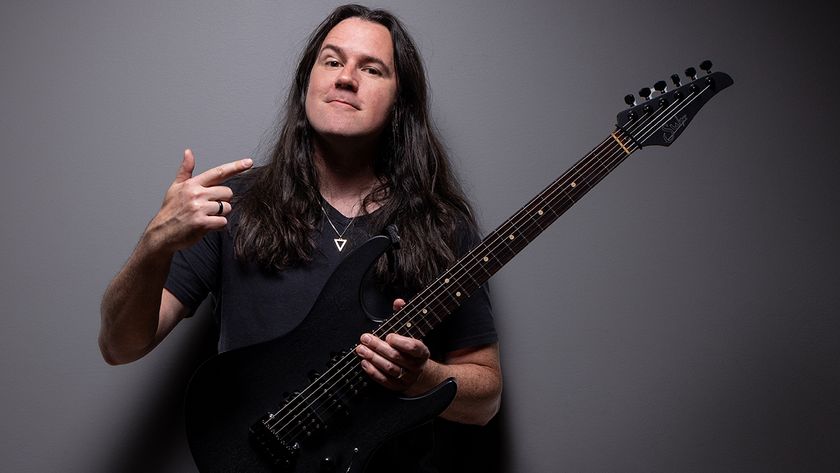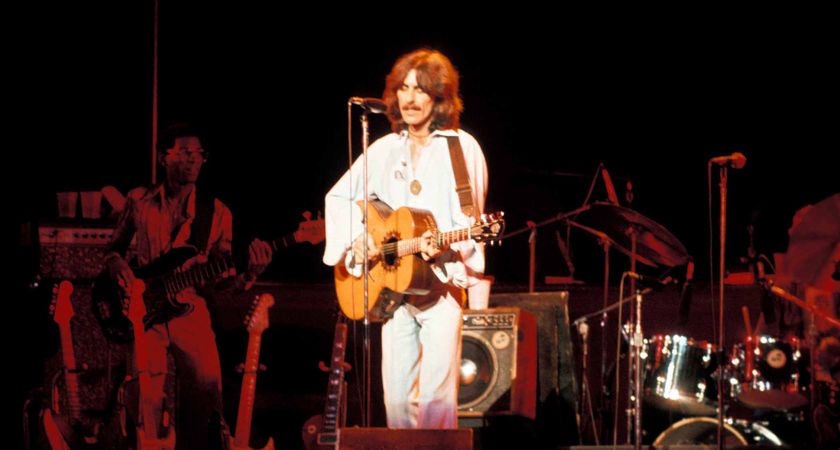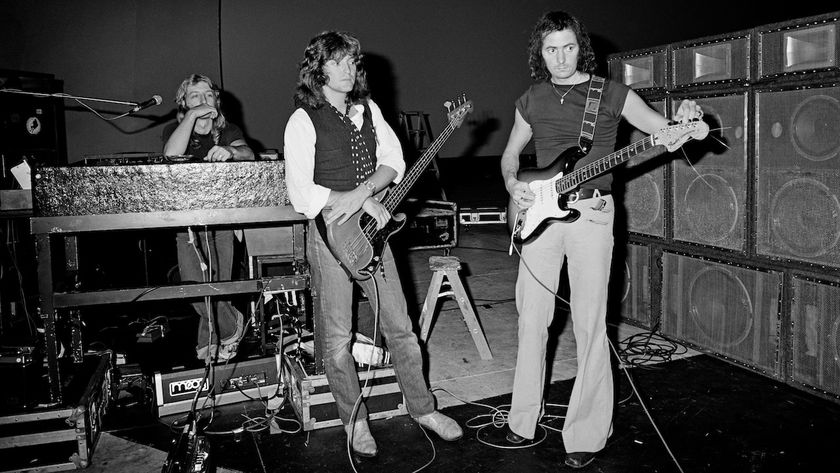The 10 Best Backing Bands of All Time

Besides reliable gear, sensible footwear and a guaranteed ride to gigs, members of good backing bands must have:
• Humility. After all, they're not the stars. The frontman (or woman) is.
• Natural talent and/or undeniable skill. A frontman doesn't need to wonder if his guitarist will actually nail the tricky guitar solo this time. That stuff needs to be automatic.
• Personality. No, they're not the stars, but backing-band members can't be bland sticks in the mud, either. They need to bring something unique to the table, each part of the band combining to create a superior "whole."
The best backing bands, of course, have all these qualities —plus lots of success. Some of them of have played on countless hits. Some have played a role in music history. Others just have so much talent that they automatically move to the next level.
This story is about 10 such backing bands.
Note that we kept our choices to backing bands with actual "names." These are groups we call "ampersand bands," since their name, in most of these cases, follows an ampersand or an "and" in the act's full name, such as John Mayall & The Bluesbreakers or Johnny and The Moondogs (neither of whom are included on this list).
Get The Pick Newsletter
All the latest guitar news, interviews, lessons, reviews, deals and more, direct to your inbox!
So even though Bill Black and Scotty Moore kicked vintage ass as Elvis Presley's backing duo, the duo never had a name. And the talented gents who backed Roger Waters or Paul McCartney at the 12-12-12 Concert for Sandy Relief? No name. You get the idea.
We also tried to focus on bands that kept a core group of members intact over the years. For example, we'd consider Elvis Costello's Attractions (always the same three guys) over Frank Zappa's Mothers of Invention (This Wikipedia page says it all).
On that note, here they are, Guitar World's 10 best backing bands of all time. Enjoy!
10. The Band
Although the Band are best known for their own dark, rustic late-Sixties masterpieces Music from Big Pink and The Band, they hit the world stage in the mid-Sixties as Bob Dylan's backing band.
Actually, their backing-band pedigree started in 1958, when they hooked up with rockabilly singer Ronnie Hawkins and called themselves the Hawks. After short-lived stints as Levon & the Hawks and the Canadian Squires, the gang was hired by Dylan in 1965, just as he was ditching his acoustic/folk persona in favor of Strats and heavier rock.

Dylan and the Band (still known as the Hawks for a while)—Robbie Robertson, Rick Danko, Levon Helm, Garth Hudson and Richard Manuel—toured the U.S. in 1965 and the world in 1966, enduring the heckling and disapproval of folk-music purists every step of the way.
The Band were on stage with Dylan in Manchester, England, on May 17, 1966, when an audience member shouted "Judas!" Dylan replied, "I don't believe you. You're a liar!" He then turned to the Band and said, "Play it fucking loud!" before launching into "Like a Rolling Stone." Or so people say ...
The Band followed Dylan to Woodstock, New York, where they recorded The Basement Tapes. It was a relationship that wound up lasting—albeit loosely—for several years, in the form of various touring and recording projects.
In terms of sheer talent, the Band were a dream team. Every member of the group was a multi-instrumentalist. They could provide soaring harmony vocals, oddball lead guitar, mesmerizing keyboards and everything from fiddle to trombone to sax to mandolin.
Maybe the Band were at the right place at the right time, but there's no denying they occupy a special place in rock history.
- 09. The Roots
Acclaimed by many to be hip-hop’s first “real band,” the Roots are one of the genre's longest-standing acts.
Formed by Tariq "Black Thought" Trotter and Ahmir "Questlove" Thompson in Philadelphia back in 1987, the Roots' double-digit studio albums alone have been enough to propel them to household-name status, including a Grammy nod for 2011's Undun.
But when they're not breaking down genre barriers, the Roots also have earned a reputation as one of the best backing acts going. In 2005, they appeared in Dave Chappelle's Block Party, a documentary film that saw them team up with everyone from Erykah Badu to Big Daddy Kane.
Since 2009, the band has served as the house band for Late Night with Jimmy Fallon, curating the program's music (sometimes controversially) and backing multiple guests through the years. Tune in any given night and you'll likely catch one of guitarist "Captain" Kirk Douglas' fine selection of Gibsons, including a beautiful CS-356.
08. The Blue Caps
Of the major "named" backing bands of rock’s first generation—Buddy Holly’s Crickets, Bill Haley’s Comets, Johnny Burnette’s Rock n’ Roll Trio and Gene Vincent’s Blue Caps (We'll even include Johnny Cash's Tennessee Three)—the Blue Caps had a monopoly on super-serious chops. Among their lineup was—to quote Jeff Beck—the “demon-like” Cliff Gallup.
Gallup, whose playing and sound are perhaps best described as "ahead of their time," was a true pioneer who had a massive influence on the first wave of British Invasion players, particularly Beck, who incorporated Gallup’s lightning-fast triplet pull-offs into his own playing. Gallup's quick "slap-echo" delay, as heard on Bluejean Bop and Gene Vincent and His Blue Caps, is still considered the gold standard sound for rockabilly guitarists.
The Blue Caps also included Willie Williams on rhythm guitar, Jack Neal on upright bass and Dickie Harrell on drums, a crew that could drive fans into a frenzy with relentless rockabilly beats as heard in “Jump Back, Honey, Jump Back,” “B-I-Bickey-Bi, Bo-Bo-Go” and “Hold Me, Hug Me, Rock Me.”
Gallup, who left the band in 1956, was replaced by Russell Williford, followed by Johnny Meeks. He died in 1988. Meeks died earlier this year.
07. The Funk Brothers
Unlike the rest of the bands on this list, the Funk Brothers weren't an "official" backing band; their nickname didn't follow an "and" or an ampersand in a band name, and they didn't make their living on the road backing a single artist.
The Funk Brothers were a crew of Detroit-based session musicians who played on most Motown recordings from 1959 to 1972.
As claimed in the opening titles to Paul Justman's 2002 documentary Standing in the Shadows of Motown, the Funk Brothers have "played on more No. 1 hits than the Beatles, Elvis Presley, the Rolling Stones and the Beach Boys—combined." And while you might want to head for your iPhone's calculator and dive into Google land to verify that, there's no denying they played on an impressive collection of Motown hits, including "Papa Was a Rollin' Stone," "I Heard It Through the Grapevine," "My Girl," "Ain't No Mountain High Enough," "Baby Love," "Signed, Sealed, Delivered I'm Yours," "The Tears of a Clown" and "(Love Is Like a) Heat Wave."
They can be heard on singles and/or albums by Marvin Gaye, the Miracles, the Temptations (Check out the video below), the Supremes, Martha & the Vandellas, the Marvelettes, the Contours, the Jackson 5, the Four Tops, the Spinners, the Originals and other acts.
Although the Funk Brothers weren't quite as fluid an ensemble as Wings or the Mothers of Invention, many musicians have been members of the brotherhood. Core members included guitarists Robert White, Eddie Willis and Joe Messina, Joe Hunter (bandleader), Earl Van Dyke (piano), James Jamerson (bass); Benny "Papa Zita" Benjamin (drums), Richard "Pistol" Allen (drums), Paul Riser (trombone), Jack Ashford (tambourine, percussion, vibraphone, marimba), Jack Brokensha (vibraphone, marimba) and Eddie "Bongo" Brown (percussion).
Other notable members include guitarist Dennis Coffey and bassist Bob Babbitt.
06. Double Trouble
In the early '80s, Texan Stevie Ray Vaughan breathed new life into a faded genre called the blues, created a distinctive modern Texas sound that is still mimicked today and introduced Jimi Hendrix, Albert King and Lightnin' Hopkins to a new generation of guitar players.
But he didn't do it alone.
Behind him every step of the way were Double Trouble—bassist Tommy Shannon, drummer Chris Layton and (as of 1985), keyboardist Reese Wynans. It can be argued (Note the COMMENTS section below, folks!) that Vaughan only really sounded like Vaughan when he was backed by Double Trouble. His sound changed when he made cameo appearances on other artists' albums and on the Vaughan Brothers' 1990 LP, Family Style.
Layton and Shannon—who, as Johnny Winter's former bassist, brought his own Texas blues pedigree into the mix—formed the perfect rhythm section for Vaughan, filling the gaps and adding dynamics during 15-minute versions of "Little Wing/Third Stone from the Sun" and sounding like a blues-shuffle instructional tape on "Empty Arms."
They understood their role in catchy guitar-based instrumentals like "Scuttle Buttin'," "Rude Mood," "Boilermaker" and "Stang's Swang" and knew how to alter their playing styles to fit each mood and blues sub-genre.
Wynans' arrival in 1985 gave the band a bigger, beefier sound, as heard on Soul to Soul and In Step.
Since Vaughan's death in 1990, Double Trouble have backed a host of artists, including Jimmie Vaughan, Buddy Guy and, more recently, Albert Cummings.
05. The Wailers
Formed in the early Sixties when Peter Tosh taught a young Robert Nesta Marley how to play guitar, the Wailers—in one incarnation or another—would back reggae’s most legendary figure throughout his entire career.
There are two distinct periods in the strata of Wailers history. The group’s original incarnation featured Tosh on guitar, with the Wailers existing as essentially a three-piece (with Bunny Livingston on percussion) between 1966 and 1974.
Citing unfair treatment within the group, Livingston and Tosh exited the band in ‘74, leaving Marley to regroup, establishing a new version of the Wailers that would serve as his backing band for the remainder of his career. The new Wailers lineup would hit the road in 1975 with Al Anderson handling guitar duties. Anderson would only stick around through '76, however, opting to join Peter Tosh's Word, Sound and Power and opening the door for Junior Marvin to enter the scene.
Marvin would breathe new life into the Wailers, as evidenced by the massive success of 1977's Exodus. But if you asked Marvin, he'd give all the credit to Roger Mayer, the man who Jimi Hendrix trusted to help craft his groundbreaking guitar sounds.
“You listen to the Wailers from 1977 onward and you listen to the Wailers pre-1977, and you will hear the difference,” Marvin says. “Part of that is down to Roger Mayer.”
But beyond a reinvigorated lineup and the technical know-how of Mayer, it was undoubtedly Marley’s strict work ethic that, regardless of lineup, made the Wailers one of the tightest backing bands in history.
“Bob was on top of everything, perfectly woven with everything,” Marvin said. “You felt like nothing would go wrong. Bob would rehearse us so much. At the end of rehearsal, you could play that thing in your sleep.”
These days, you can catch multiple versions of the Wailers on tour. The Wailers Band, led by “Family Man” Barrett, and the Original Wailers, featuring Al Anderson and Junior Marvin, are both doing their parts to keep the music and spirit of Bob Marley alive.
04. Booker T. & the M.G.'s
Among the first backing bands to be inducted into the Rock and Roll Hall of Fame, Booker T. and the M.G.s might very well be the most imitated house band in history, playing on hundreds of recordings for Stax Records, fortifying the sound of Southern soul in the process. During the 1960s, they would lend their talents to countless hits, including Sam & Dave's "Soul Man" and Otis Redding's "(Sittin' On) the Dock of the Bay," even backing Redding at the 1967 Monterey Pop Festival.
While primarily known as a backing band, Booker T. & the M.G.’s also received some acclaim on their own, particularly with the 1962 instrumental “Green Onions,” which was added to the Library of Congress's National Recording Registry list of "culturally, historically, or aesthetically important" American sound recordings earlier this year.
In 1965, original bassist Lewie Steinberg would part ways with the band, paving the way for another Stax house band member, Donald “Duck” Dunn, to join the fray, solidifying a storied musical partnership.
“Steve and I are like an old married couple,” Dunn would later say of his relationship with Cropper. “I can look at him and know what he’s going to order for dinner.”
A further nod to their in-demand status, Dunn and Cropper would later join a pair of young Hollywood actors looking to cut an album of slick blues and R&B. They called themselves “the Blues Brothers.”
03. The Heartbreakers
Some names in popular culture are just inseparable: Starsky and Hutch; Laverne and Shirley; and Tom Petty and the Heartbreakers.
Formed from the remnants of the Southern rock band Mudcrutch, the pairing of Petty's wry lyrics and penchant for melodies gelled seamlessly with the rock steady rhythm section of drummer Stan Lynch and bassist Ron Blair.
And even when Petty—much to the dismay of many, including his bandmates—went solo in the late ‘Eighties, guitarist Mike Campbell was never far away, playing guitar on every track of the critically acclaimed Full Moon Fever.
Outside of the Heartbreakers, Mike Campbell is a much-sought-after studio musician, adding his tasteful licks to recordings from the likes of Johnny Cash and Bob Dylan, among others.
02. The E Street Band
Two high-profile Bruce Springsteen solo albums—Nebraska and We Shall Overcome: The Seeger Sessions—might be fine pieces of work, but there's nothing quite like the sound of Springsteen when he's backed by the musicians who've had his back since 1972, the E Street Band.
The E Street Band is proof that a great band is more than the sum of its parts. Current band members, including Steven Van Zandt, Max Weinberg, Nils Lofgren and Garry Tallent, might have their own successful side projects (including a never-ending series of mob-related cable TV shows), but they all know who's "Boss." When they are called to action, they are truly a force to be reckoned with. In this way, they are perhaps the perfect backing band; they live to serve their leader, but they do it while adding touches of their individual personalities and strengths.
Springsteen's early albums are clearly defined by the sound of the E Street Band, especially the trademark sax playing of the late Clarence Clemons. They often transformed what could have been simple compositions into grand, sprawling, dramatic works, such as "Born to Run" (Check out the live video below), "Lost in the Flood" and "Backstreets."
And while the band might not be so concerned with forging new sounds these days, as a live unit, they kick ass when it comes to generating excitement and reproducing their classic sound.
01. Crazy Horse
From 1969’s Everybody Knows This is Nowhere all that way up through the excellent Psychedelic Pill from 2012, the partnership between Neil Young and Crazy Horse stands as one of the most prolific in rock lore.
While the band has gone through its share of incarnations through the years, the drum-tight rhythm section of Billy Talbot and Ralph Molina has been intact since the Sixties, and guitarist Frank “Poncho” Sampedro has been a steady fixture since 1975’s Zuma.
In the realm of backing bands, Crazy Horse are far from the tightest act around, drifting lazily but deliberately between tempos with the occasional burst of cacophonous noise thrown in for good measure. But Young has never tapped them for metronome-like precision; he always comes back to them because, in the purest musical sense, they complete each other.
“I don’t think of my guitar solos as guitar solos,” said Young in a classic Guitar World interview, “because when we play, we’re like a big band jamming and taking long rides together.”
And so Crazy Horse stand atop the heap of backing bands for an unparalleled ability to elevate their frontman to new heights, never hesitating to take a leap out of the pocket when the music calls for it. Assuming their signature stance, huddled tightly around Molina's drum set, you get the undeniable impression that they're in another world entirely, journeying through strange landscapes with no particular destination in mind.
Neil Young said it himself: “I can’t do this with anyone else.”
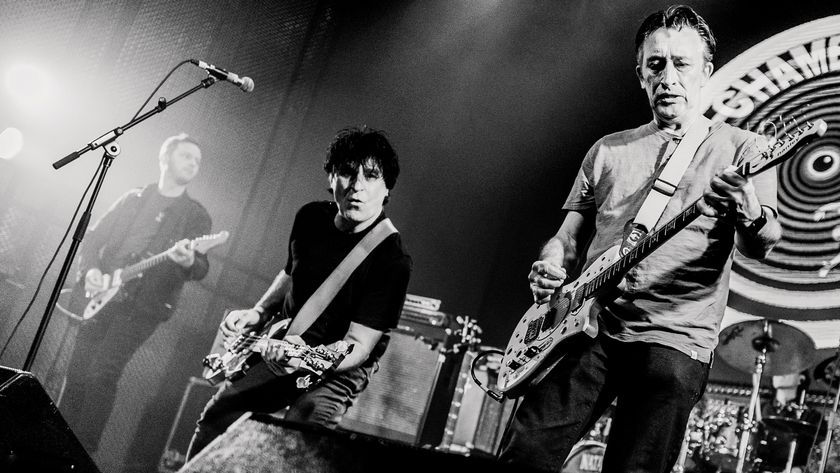
“Once Dave got his Roland Space Echo, it changed the vibe… that, and a lot of marijuana”: They inspired everyone from Oasis to the Smashing Pumpkins. Now English post-punk luminaries the Chameleons are back for more
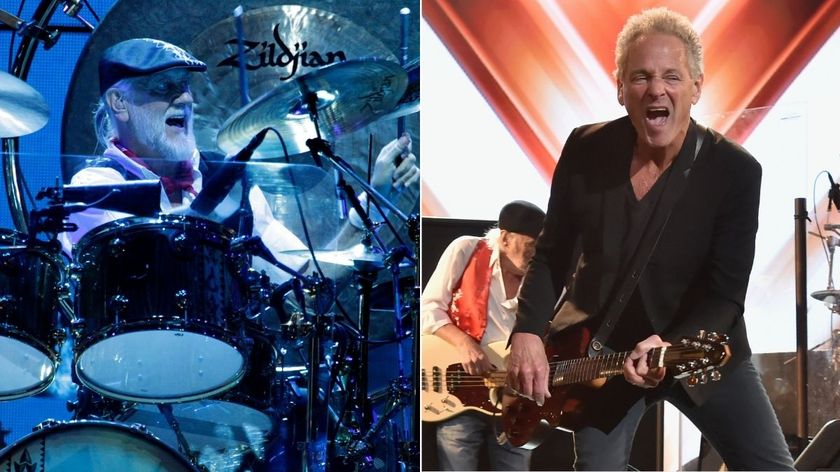
“Slightly unreal moment to sit with Lindsey Buckingham and see his genuine happiness for Mick to finally do his own album”: Lindsey Buckingham and Mick Fleetwood reunite in the studio
